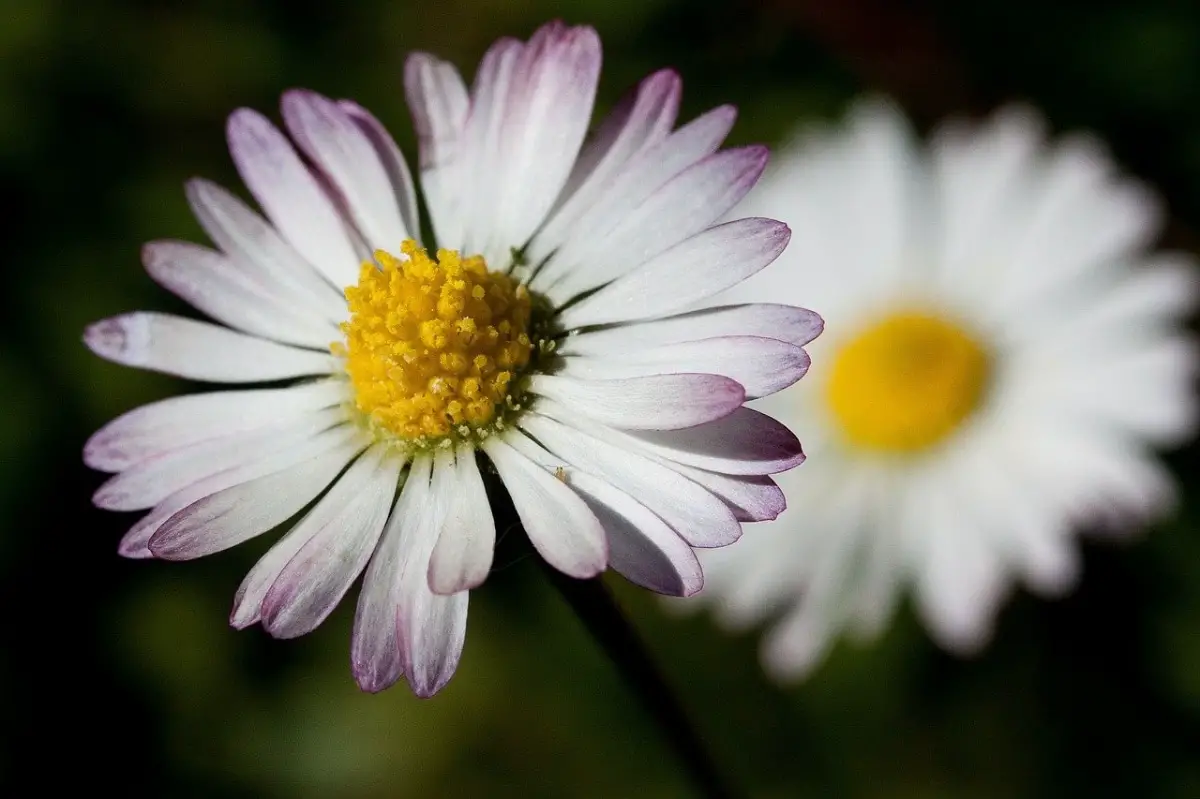
The Perpetual wars It is a small grass, almost tussock, but it produces flowers of a white color that attracts all eyes. It is well known by the name of the daisy of the meadows, since it is common to find it in those places, but also in the gardens and in the openings.
Like all herbaceous, it has a rapid growth rate. That is why it is very interesting to include it in the design of the garden, since for example it can be planted near the lawn or mixed with it so that the bees and butterflies come to visit it every time they feel the need to feed.
Origin and characteristics of Perpetual wars

Image – Wikimedia / H. Zell
The daisy of the meadows is a plant that belongs to the genus bellis, which belongs to the Asteraceae family. It has a rhizomatous root system, and obovate-spatulate green leaves. which measure about 60 centimeters long by up to 2 centimeters wide.
White flowers sprout from its center5 centimeters in diameter from autumn to early summer, and after pollination it produces fruits that are achenes of 1 centimeter in diameter.
It is native to Europe, North Africa and Central Asia, although today it can be found anywhere in the world (except at the poles and in deserts).
What is?
The Perpetual wars it is used as a vegetable. The leaves are eaten in salads, sometimes even mixed with fennel (Common fennel) or dandelion (Taraxacum officinale). Therefore, it is very interesting to have these plants in the kitchen or on a window ledge, so that they get the sun and can grow well. This way they will need less time to be ready.
However It also has medicinal use. In popular medicine it is used as a remedy for wounds, burns, and for mild respiratory diseases, such as colds, and digestive diseases. It is also believed to take care of the eyes. To take advantage of its benefits, the leaves, flowers and roots are consumed.
Cultivation and care of the meadow daisy

Image – Wikimedia Commons / PROPOLY8
This is a very resistant plant, which adapts easily to the conditions that exist in different places. That is why we can say that it is ideal for beginners, as well as those who want to grow easy species. So we are going to explain to you how to take care of the Perpetual wars:
Sowing
The best time to sow the seeds of this herb is in spring. You have to wait for the temperatures to be warmsince in this way they will germinate faster and the seedlings will grow better. The step by step to follow is as follows:
- The first thing is to prepare the seedbed, like a flowerpot or, if possible, a seedbed tray like this. We fill it completely with universal substrate such as this, and we water.
- Then we take the seeds and put them in the seedbed, separated from each other. Avoid piling them up, since otherwise when growing all together there would be more than one that would not survive. If we sow them in a seedling tray, we will put two in each alveolus; and if we do it in a pot, we will choose a 10,5 cm diameter one and place a maximum of 4 on the ground.
- Finally, we cover the seeds with a little substrate, and sprinkle them with water.
Now the only thing left to us is to take the seedbed outdoors, and put it in a sunny place.
Transplant
When the seedlings have roots coming out of the holes in the seedbed or pot, it will be time to plant them in pots or in the ground. This will be done carefully, taking care not to manipulate the roots too much.
Once they are in their new containers or on the ground, they will be watered by wetting the soil, until it is well soaked.
Irrigation
The Perpetual wars It must be watered if it does not rain, since it does not resist much drought. You also have to hydrate it if it is in a pot, every time we see that the soil is drying out. The frequency will vary depending on the season of the year and the climate, but you have to know that the warmer and drier, the more you will have to be aware of the irrigation.
But be careful, because waterlogging will also harm it and a lot. When in doubt, it is best to use a soil moisture meter, such as this.
Subscriber
It is advisable to fertilize the daisy of the meadows so that it is healthy and blooms every year, from spring to summer. For this, we will use organic fertilizers, such as guano or worm castings (for sale here!), since its flowers attract various pollinating insects and it is important to respect them. The only thing is that if we have it in a pot, we must opt for liquid fertilizers; this way there will be no problems with drainage.
Pests and diseases of the Perpetual wars
Although it is quite resistant in general, it can sometimes be attacked by:
- Pests: aphids, White fly, thrips, miners, and caterpillars. You can combat them with ecological insecticides, such as diatomaceous earth that you can buy here!.
- Diseases: mushrooms (Botrytis, powdery mildew, Cercospora, Septoria and Pythium) that cause root and / or leaf rot and are treated with systemic fungicides; and the yellow virus that unfortunately has no cure. The symptoms of this disease are the appearance of yellow spots on the leaves, starting near the veins and later spreading to the rest of the leaf surface.
Rusticity
Supports up to -20ºC minimumand 35ºC maximum.

How about the Perpetual wars?
